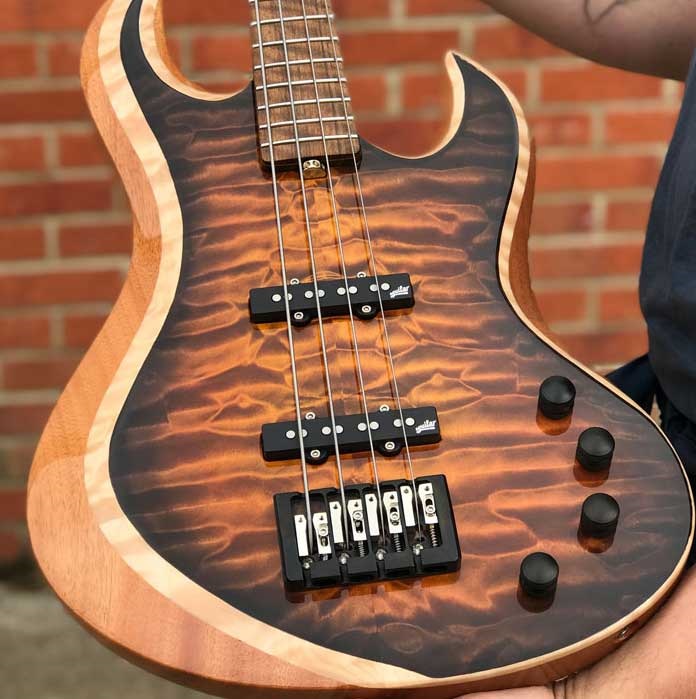Best Bass Gear receives a lot of communication from first-time builders asking for advice on how they should go about building a bass guitar properly.
One of the first things asked is one simple question: Do you have a plan?
1. It’s all about having a goal
A plan does not necessarily mean a blueprint or a way of doing things. In this context, having a plan simply means having a goal, and doing your best to achieve that goal.
Will you achieve that goal? Yes, you will. However, it’s probably true that once your goal is achieved, it will not have followed your original plan. This is normal, because any number of things can be changed around to suit the build project as you’re building it.
2. It’s nice to have a personal guide
What you’re doing when putting a plan together is basically creating a guide. Do you have to follow your guide exactly? No. But you should try to stick to your original plan to the best of your ability.
3. It’s nice to have a guide that easy-to-follow
Here is the easiest bass build plan there is:
Build a Precision Bass copy.
That’s it. Five words with a very clearly defined goal.
A Fender Precision Bass copy is one of the most well-known electric bass guitar designs on the planet, the parts are readily available, templates are available for fabricating bodies and necks, all the measurements are well-documented, and so on.
If you’re asking yourself why you would even bother writing that down as a plan (even if it’s just a sticky-note on the wall,) it’s a constant reminder to you of what goal you’re attempting to achieve.
And no, your bass build plan should not be only one 5-word phrase. But now you know how simple a build plan can be.
4. “Loose” plans are the best kind
What this means is to have a plan that allows for changes which won’t screw up the whole build project.
Example 1: If the plan is to build a P-Bass copy, the neck’s pegboard has four inline tuner holes. But maybe when shopping around for a neck you find one at a really good price, and it has a 2×2 tuner layout instead of the inline 4. Go ahead and get that neck instead if it’s to your liking.
Example 2: Using the P-Bass copy example again, when shopping around for a bridge, you find one that is not a stock P-style bridge, but something you feel would work better (like these?) for your build. If you like it, get it. Remember that if building a copy, there is no rule that says you absolutely must build an exact copy. Make it yours and use what you like.
Example 3: You’ve decided to finish the bass in a natural finish, but once done, you hate the way it looks because the grain of the wood just doesn’t look right. Paint the body in a solid color. Maybe that wasn’t your original plan, but that’s fine because if the solid color looks better and covers up “ugly” grain lines, that’s just fine.
5. A plan that fits on 1 page is a good thing
The best kind of plan is one where each part of the process is ordered by number, and where each step can be crossed off with a marker once completed.
Believe me, you will get great satisfaction out of crossing off things on a list because every time you do that, you’re getting something done.
This 1 sheet you make obviously won’t contain things like blueprints, wiring diagrams and things of that sort, but that’s not the point. The point of that sheet is to have an overview of your plan you can refer to at any time so you know what’s done, and more importantly what isn’t.
If you are the type that has several build projects going on, you will get very good use out of single-sheet plans. If you have to step away from a project for a while, tape that project sheet directly to the instrument (for what’s completed of it.) When you come back to it later, grab the sheet and you instantly know what still needs to be done to complete the instrument.
That’s certainly better than coming back to a project where you have nothing but a pile of papers that don’t tell you anything about where you left off, isn’t it?




Most of my builds are “on-off” to customer specs/desires, so making a full size plan on poster board is critical. I’ve caught many a potential boo-boo this way, and avoided some costly mistakes.
Plus, my customer can see how their dream bass will really look in full scale. Certain design elements drawn in small scale might look very different (not in a good way) when put in full scale.
I want to build a bass, not put parts together
My planning style is “additive”. The first stage is a list of “what I want”. I use a spreadsheet, with one line for each physical aspect, including price, source(s) and even weights. This “defines” the bass and helps to keep it on budget. The next stage is to draw it in a CAD program. This defines the look. The next stage is to print out full size templates and use them to make a body template (1/4 MDF works well). Once you have this, you can screw on cheap wood of the correct thickness, then use a flush trim router bit to produce a prototype body. Attaching the neck and control knobs gives you a real good feel for if the looks and ergonomics will suit. The last stage is to get or make all the templates which will be needed.